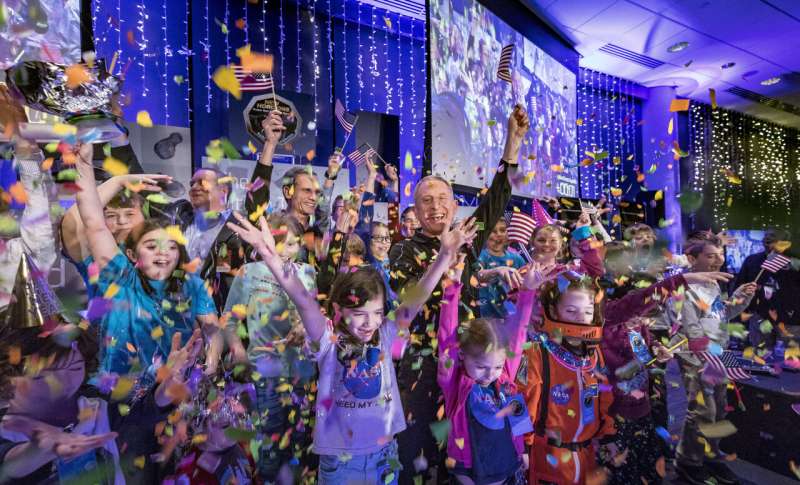Looking back at a New Horizons New Year's to remember

Safe to say, 2020 came in more quietly for many members of the New Horizons mission team than did 2019.
A year ago, NASA's New Horizons spacecraft flew past the Kuiper Belt object 2014 MU69 (now known as Arrokoth) in the early hours of New Year's Day, ushering in an era of exploration of the enigmatic Kuiper Belt, a region of primordial objects that holds keys to understanding the origins of the solar system. That flyby was both the first ever close-up exploration of a Kuiper Belt object and the most distant exploration of any object in space—more than a billion miles beyond Pluto, which New Horizons explored in 2015.
At the Johns Hopkins Applied Physics Laboratory in Laurel, Maryland, during what the Washington Post called the "nerdiest New Year's party in the solar system," participating scientist, astrophysicist and legendary Queen guitarist Brian May rang in 2019 with a song inspired by New Horizons. Mission Principal Investigator Alan Stern led a crowd of team members, family and friends in the countdown to the 12:33 a.m. flyby of the object, then known by its nickname, Ultima Thule.
Signals confirming the spacecraft was healthy and had filled its digital recorders with science data on MU69 reached the mission operations center at APL at 10:29 a.m. EST.
"Congratulations to NASA's New Horizons team, Johns Hopkins Applied Physics Laboratory and the Southwest Research Institute for making history yet again. In addition to being the first to explore Pluto, today New Horizons flew by the most distant object ever visited by a spacecraft and became the first to directly explore an object that holds remnants from the birth of our solar system," NASA Administrator Jim Bridenstine said at the time. "This is what leadership in space exploration is all about."
In the following months, New Horizons transmitted dozens of data sets to Earth, with the team writing new chapters in the story of Arrokoth and the outer solar system. And there's more to come in 2020.
"The flyby of Arrokoth was a landmark event in space exploration and for the first time revealed just how the building blocks of planets are made," said Stern, of the Southwest Research Institute. "Data from that flyby have been coming back to Earth all of 2019 and will continue to do so across all of 2020 and part of 2021. The discoveries those data hold have certainly just begun!"
Provided by American Astronomical Society





















